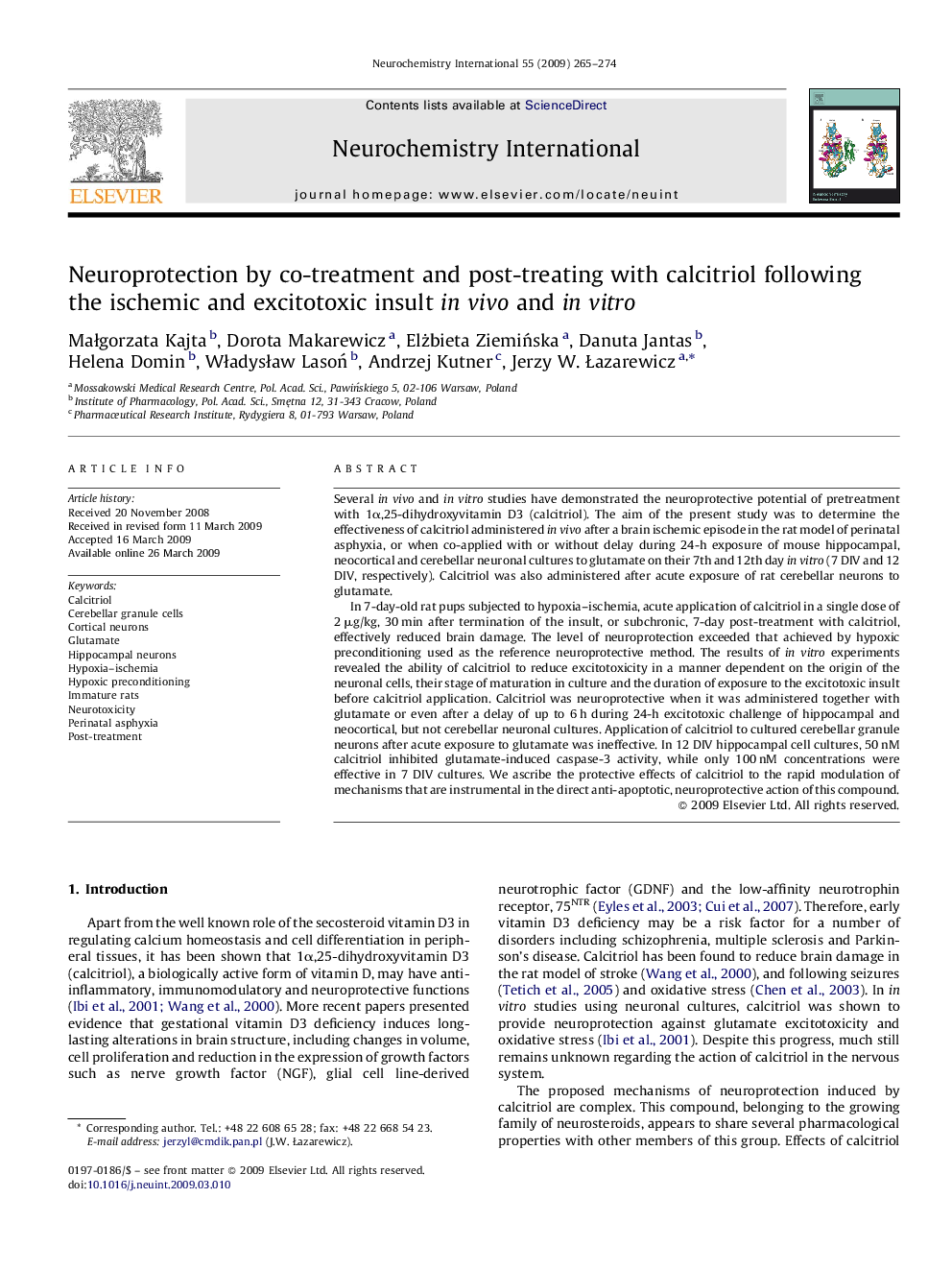| Article ID | Journal | Published Year | Pages | File Type |
|---|---|---|---|---|
| 10958357 | Neurochemistry International | 2009 | 10 Pages |
Abstract
In 7-day-old rat pups subjected to hypoxia-ischemia, acute application of calcitriol in a single dose of 2 μg/kg, 30 min after termination of the insult, or subchronic, 7-day post-treatment with calcitriol, effectively reduced brain damage. The level of neuroprotection exceeded that achieved by hypoxic preconditioning used as the reference neuroprotective method. The results of in vitro experiments revealed the ability of calcitriol to reduce excitotoxicity in a manner dependent on the origin of the neuronal cells, their stage of maturation in culture and the duration of exposure to the excitotoxic insult before calcitriol application. Calcitriol was neuroprotective when it was administered together with glutamate or even after a delay of up to 6 h during 24-h excitotoxic challenge of hippocampal and neocortical, but not cerebellar neuronal cultures. Application of calcitriol to cultured cerebellar granule neurons after acute exposure to glutamate was ineffective. In 12 DIV hippocampal cell cultures, 50 nM calcitriol inhibited glutamate-induced caspase-3 activity, while only 100 nM concentrations were effective in 7 DIV cultures. We ascribe the protective effects of calcitriol to the rapid modulation of mechanisms that are instrumental in the direct anti-apoptotic, neuroprotective action of this compound.
Keywords
Related Topics
Life Sciences
Biochemistry, Genetics and Molecular Biology
Cell Biology
Authors
MaÅgorzata Kajta, Dorota Makarewicz, Elżbieta ZiemiÅska, Danuta Jantas, Helena Domin, WÅadysÅaw LasoÅ, Andrzej Kutner, Jerzy W. Åazarewicz,
